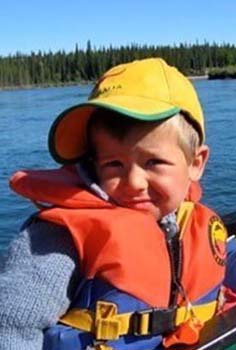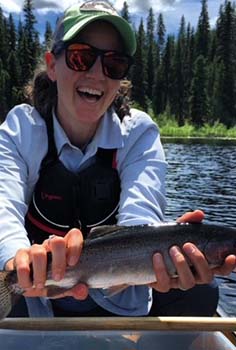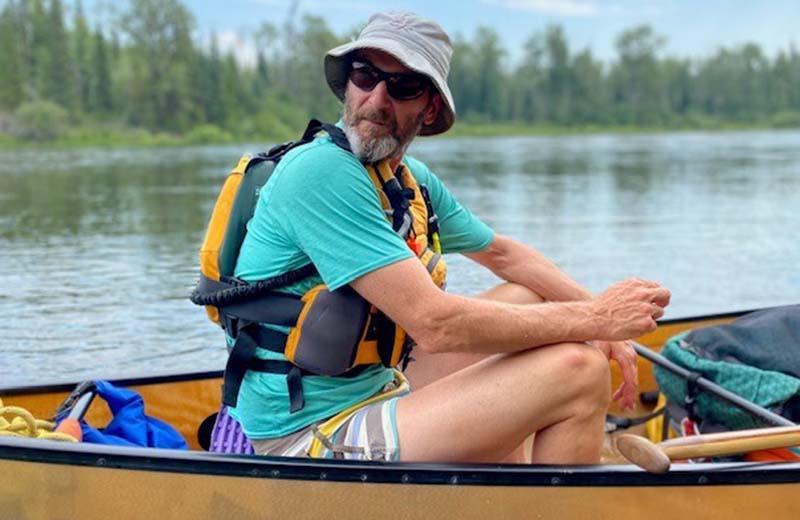
With drownings as the third leading cause for accidental death in Canada, personal flotation devices (PFD) are an absolute must when adventuring on the water. No matter your watercraft of choice, whether canoe, kayak, or powerboat, lifejackets and PFDs are the safety equipment you want not only onboard, but on your body. And luckily, they have come a long way from the stiff, orange foam vests we used to use!
What’s the difference between a lifejacket and a PFD? You’ll see lifejackets among the safety equipment on a ferry or a bigger boat. These are orange, yellow, or red keyhole-style safety equipment designed to turn an unconscious person over in the water. You might remember these as the neck-stretching, too-big, gas-scented items your grandpa kept under the seat of his aluminum boat.
A PFD, on the other hand, is often sport-specific. You can have PFDs for kayaking, water-skiing, fishing, and paddleboarding. These may be lighter and less bulky than a lifejacket, and they’re often contoured for comfort and so they don’t inhibit movement while paddling. They come in great colours, too!
PFDs are comfortable for all-day use. They’re stylish and keep you warm in rough weather and cool in the summer. And they’re not just for kids! Adults need to be safe while enjoying water sports as well.
According to the BC & Yukon Branch of the Lifesaving Society, 33% of all drownings in BC and Yukon are boating related. The boating dangers they list are:
- Boating alone
- Boating in unsafe water or weather conditions
- Not wearing a lifejacket or PFD
- Overloading
- Speeding
- Alcohol consumption
Add the cold water temperatures we experience in Northern BC to that list and no matter your skill level, drowning is a major risk while boating.
Unfortunately, if boaters have them, most stow lifejackets or PFDs them rather than wear them. “The majority of boating accident victims were not wearing a lifejacket or PFD,” states the Lifesaving Society. “You can compare trying to don a lifejacket or PFD in an emergency to trying to put on your seatbelt in the middle of a car accident.” Lifejackets and PFDs decrease the likelihood of drowning enormously.
Some tips for making lifejackets and PFDs a part of your boating routine:
Shop for something that fits, that’s comfortable, and that you can wear all day
- Read the label. Do you fit within the weight limits? PFDs are weight- and size- specific. Some are constructed to better fit breasts and bellies. There are PFDs for all body sizes, including infants and children. Kids are best served by a lifejacket with a collar and a handle – if they can’t flip themselves face-up in the water, the collar will do it for them, and the handle allows you to easily pull them back into a boat or out of harm’s way.
- Buy a PFD that fits your body – try it on! Swing your arms around. If you’re a canoeist, mock-paddle and test if it catches you in the armpits, and if you’re a kayaker make sure the pockets don’t stick too far out in the front.
Model the behaviour you want to see in your kids and others
- Start early. Every child should be wearing a PFD in a boat, and if it’s always something you’ve done, it’ll likely be something you’ll always do. Remember to keep kids within arms’ reach - safety equipment is no replacement for adult supervision.
- Wear a PFD yourself. If kids are onboard wearing a PFD, it’s weirder for adults NOT to wear a PFD than to wear one. You get used to it – just as you wouldn’t imagine getting into a car and not strapping on your seatbelt, soon you’ll feel like something is missing if you get into a boat without your PFD.
Talk about safe boating and normalize using the tools to getting home safe
- Know the rules. Every watercraft (including human-powered vessels like canoes and paddleboards) is required by law to have a lifejacket or PFD for each person on board. The Transport Canada Small Vessel Regulations specify that inflatable PFDs cannot be worn by people under 16 years old or by the operator of personal watercraft.
- No one’s going to tease you for being safe! You might be the only adult on the boat wearing a PFD, but if something goes wrong, everyone will be glad there’s an adult whose safety is assured, so they can see to the safety of others. Remember: we can’t save our loved ones if we aren’t safe ourselves.

Keep in mind that PFDs and lifejackets are just a single part of safe boating. Check the forecast and know the waterway you’re boating; leave a trip itinerary with someone you trust at home; wear the right gear for the weather; follow safe boating rules by getting a Pleasure Craft Operator Card; and don’t drink and drive your boat! (Between 1991 and 2000, alcohol consumption was involved in 38% of all boating deaths, including 44% of powerboating deaths and 43% of canoeing deaths.)
One of the joys of living in Northern BC is access to thousands of kilometres of fresh and salt water for pleasure boating, and it’s something we can share with friends and family, but it’s something best done as safely as possible. Don’t forget your PFD at home, and don’t forget to wear it. Your life can depend on it.
Resources:
- BC & Yukon Branch of the Lifesaving Society
- https://www.lifesaving.bc.ca/boating-fishing-safety
- https://tc.canada.ca/en/marine-transportation/getting-started-safe-boating/choosing-lifejackets-personal-flotation-devices-pfds
Places to buy PFDs:
- Atmosphere, Canadian Tire, and other sporting goods stores
- Mountain Equipment Company, REI, and other wilderness sports websites
- Sport fishing, hunting and water craft stores














Comments